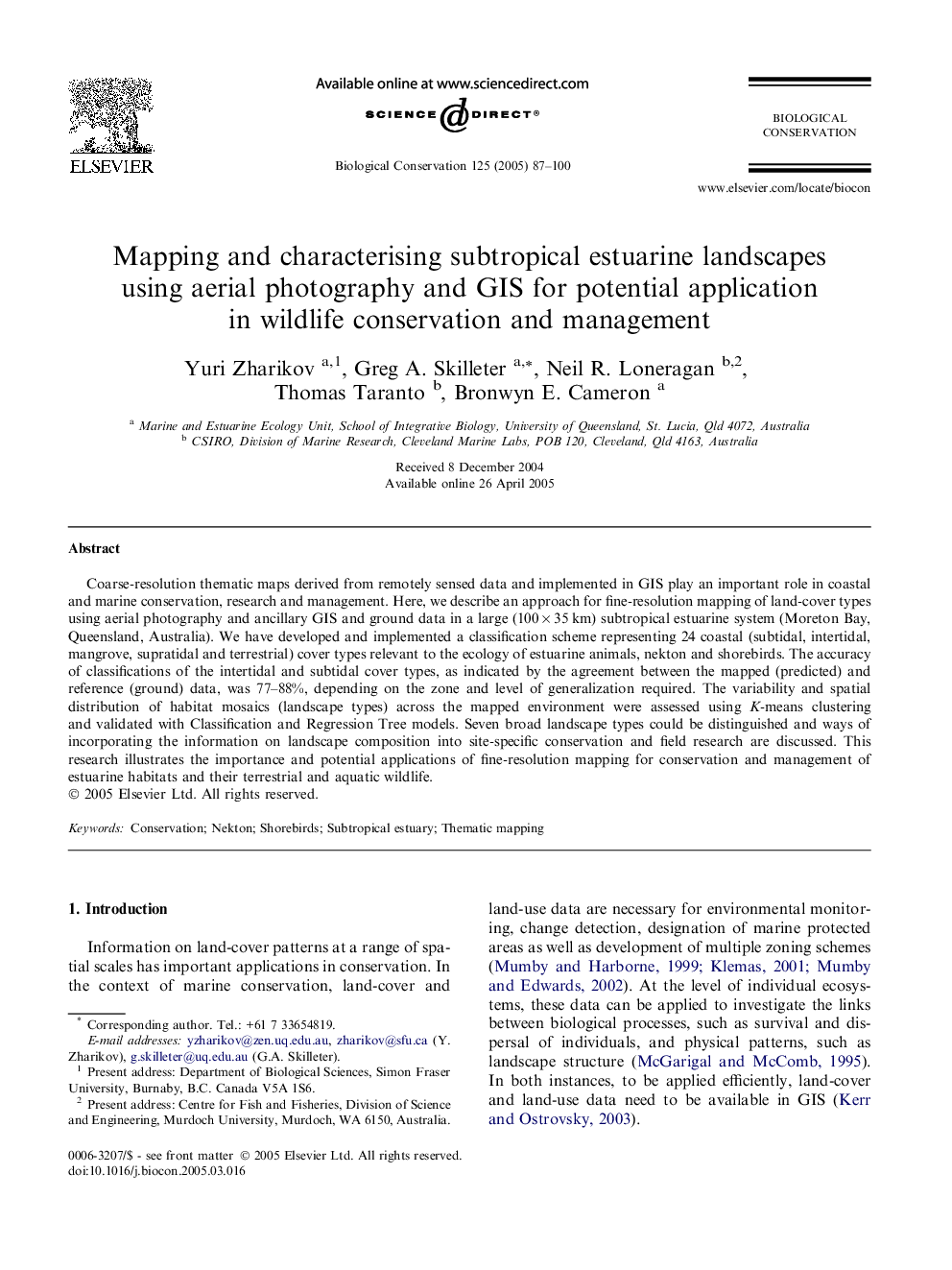| Article ID | Journal | Published Year | Pages | File Type |
|---|---|---|---|---|
| 9446148 | Biological Conservation | 2005 | 14 Pages |
Abstract
Coarse-resolution thematic maps derived from remotely sensed data and implemented in GIS play an important role in coastal and marine conservation, research and management. Here, we describe an approach for fine-resolution mapping of land-cover types using aerial photography and ancillary GIS and ground data in a large (100Â ÃÂ 35Â km) subtropical estuarine system (Moreton Bay, Queensland, Australia). We have developed and implemented a classification scheme representing 24 coastal (subtidal, intertidal, mangrove, supratidal and terrestrial) cover types relevant to the ecology of estuarine animals, nekton and shorebirds. The accuracy of classifications of the intertidal and subtidal cover types, as indicated by the agreement between the mapped (predicted) and reference (ground) data, was 77-88%, depending on the zone and level of generalization required. The variability and spatial distribution of habitat mosaics (landscape types) across the mapped environment were assessed using K-means clustering and validated with Classification and Regression Tree models. Seven broad landscape types could be distinguished and ways of incorporating the information on landscape composition into site-specific conservation and field research are discussed. This research illustrates the importance and potential applications of fine-resolution mapping for conservation and management of estuarine habitats and their terrestrial and aquatic wildlife.
Related Topics
Life Sciences
Agricultural and Biological Sciences
Ecology, Evolution, Behavior and Systematics
Authors
Yuri Zharikov, Greg A. Skilleter, Neil R. Loneragan, Thomas Taranto, Bronwyn E. Cameron,
